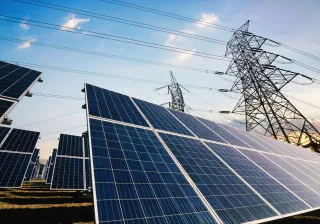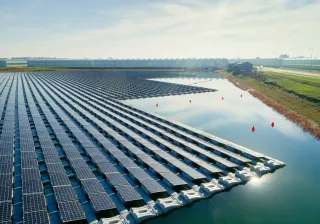In Europe, the energy transition is no longer a future vision. As various sectors of society become electrified, we are increasingly dependent on the functioning of power systems. At the current stage of energy transition, we already understand the serious consequences of green transition for the availability of electricity. Where, before the transition, power production was fully controlled by people, the new realities force us to detach ourselves from the feeling of being in control.
Renewable sources of energy, such as solar and wind power, are clean and inexhaustible natural resources but not without their own problems. The presence of sunshine or wind is practically beyond human control, which, in certain respects, means going back 150 years in progress, to the time before the combustion engine was invented. Again, we find ourselves in a situation where we need to look up at the sky to see whether it is a favourable moment to do the laundry or prepare for a trip.
Over the past decades, European societies have gotten accustomed to being independent of the immediate effects of nature. Therefore, returning to a time when the sun and wind dictate whether we can cook or enjoy just-the-right room temperature is equivalent to going back to the dark ages, into the cold and misery.
Again, we find ourselves in a situation where we need to look up at the sky to see whether it is a favourable moment to do the laundry or prepare for a trip.
As the energy transition progresses, we have a few options by which to adapt ourselves to the new realities. When examining the options, we should bear in mind that it greatly depends on the point of view adopted which one of them appears to be the most optimal solution.
Energy should be used when it is available – can people change their behaviour?
From the technical and economic point of view, the optimal solution would be to change people's behaviour in such a way that, when the sun is shining and wind blowing, factories would manufacture commodities at maximum capacity, and people would prepare food and do the laundry at their homes. Correspondingly, on calm and cloudy days, the factories would shut down their machines, people would lower their home temperature and refrain from watching television.
If this feels difficult to implement, we have two more options left. Both would be technology-based but of very different nature, and they would have rather different impacts.
Storage and transfer of electricity – will technology solve all challenges?
The first of the options, i.e., storage of energy, is the one that has probably attracted most public attention recently. In this solution, the momentary disparities in supply and demand are balanced by using energy storages. It can be done by transforming momentary oversupply of energy into, for example, chemical potential energy, to be released as electricity when the solar and wind power production can no longer cover society's energy needs.
The second technical option is setting up so extensive electricity systems that when clouds cover the northern skies, the needed power is transferred from, say, Italy with the sun shining from a cloudless sky.
Every option naturally poses its own challenges. The change in behaviour calls for a change in attitude, energy storages require vast amounts of money, and multinational use of electricity grids requires unforeseen amount of collaboration and mutual confidence between nations.
The future electricity system will probably be a mix of all the above. However, we should consider in which direction regulation is currently steering the development – and whether we would want the direction to turn.
VTT's guide to utilizing sector integration
Sector integration, i.e. linking different forms of energy to each other and to end users – buildings, transport and industry –, enables sustainable energy production and consumption. At the same time, it accelerates the recovery from the current energy crisis.
VTT has created a guide that introduces sector integration as a phenomenon and presents ways in which different sectors can benefit from the opportunities brought by the transformation of the energy system.
Sektori-integraatio: kohti hiilineutraalia energiajärjestelmää (in Finnish)






